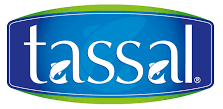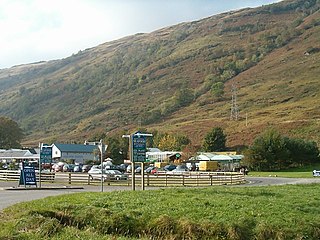Aquaculture, also known as aquafarming, is the controlled cultivation ("farming") of aquatic organisms such as fish, crustaceans, mollusks, algae and other organisms of value such as aquatic plants. Aquaculture involves cultivating freshwater, brackish water, and saltwater populations under controlled or semi-natural conditions and can be contrasted with commercial fishing, which is the harvesting of wild fish. Aquaculture is also a practice used for restoring and rehabilitating marine and freshwater ecosystems. Mariculture, commonly known as marine farming, is aquaculture in seawater habitats and lagoons, as opposed to freshwater aquaculture. Pisciculture is a type of aquaculture that consists of fish farming to obtain fish products as food.

Salmon is the common name for several commercially important species of euryhaline ray-finned fish from the genera Salmo and Oncorhynchus of the family Salmonidae, native to tributaries of the North Atlantic (Salmo) and North Pacific (Oncorhynchus) basins. Other closely related fish in the same family include trout, char, grayling, whitefish, lenok and taimen, all coldwater fish of the subarctic and cooler temperate regions with some sporadic endorheic populations in Central Asia.

Harris is the southern and more mountainous part of Lewis and Harris, the largest island in the Outer Hebrides, Scotland. Although not an island itself, Harris is often referred to in opposition to the Isle of Lewis as the Isle of Harris, which is the former postal county and the current post town for Royal Mail postcodes starting HS3 or HS5.

Fish farming or pisciculture involves commercial breeding of fish, most often for food, in fish tanks or artificial enclosures such as fish ponds. It is a particular type of aquaculture, which is the controlled cultivation and harvesting of aquatic animals such as fish, crustaceans, molluscs and so on, in natural or pseudo-natural environments. A facility that releases juvenile fish into the wild for recreational fishing or to supplement a species' natural numbers is generally referred to as a fish hatchery. Worldwide, the most important fish species produced in fish farming are carp, catfish, salmon and tilapia.

Gillnetting is a fishing method that uses gillnets: vertical panels of netting that hang from a line with regularly spaced floaters that hold the line on the surface of the water. The floats are sometimes called "corks" and the line with corks is generally referred to as a "cork line." The line along the bottom of the panels is generally weighted. Traditionally this line has been weighted with lead and may be referred to as "lead line." A gillnet is normally set in a straight line. Gillnets can be characterized by mesh size, as well as colour and type of filament from which they are made. Fish may be caught by gillnets in three ways:
- Wedged – held by the mesh around the body.
- Gilled – held by mesh slipping behind the opercula.
- Tangled – held by teeth, spines, maxillaries, or other protrusions without the body penetrating the mesh.

The Atlantic salmon is a species of ray-finned fish in the family Salmonidae. It is the third largest of the Salmonidae, behind Siberian taimen and Pacific Chinook salmon, growing up to a meter in length. Atlantic salmon are found in the northern Atlantic Ocean and in rivers that flow into it. Most populations are anadromous, hatching in streams and rivers but moving out to sea as they grow where they mature, after which the adults seasonally move upstream again to spawn.

Pink salmon or humpback salmon is a species of euryhaline ray-finned fish in the family Salmonidae. It is the type species of the genus Oncorhynchus, and is the smallest and most abundant of the seven officially recognized species of salmon. The species' scientific name is based on the Russian common name for this species gorbúša (горбуша), which literally means humpie.
Infectious salmon anemia (ISA) is a viral disease of Atlantic salmon caused by Salmon isavirus. It affects fish farms in Canada, Norway, Scotland and Chile, causing severe losses to infected farms. ISA has been a World Organisation for Animal Health notifiable disease since 1990. In the EU, it is classified as a non-exotic disease, and is monitored by the European Community Reference Laboratory for Fish Diseases.

Tassal is a Tasmanian-based Australian salmon farming company founded in 1986. It was listed on the Australian Securities Exchange (ASX) from 2003 until 2022. Tassal is the largest producer of Tasmanian grown Atlantic salmon, supplying salmon to both domestic and international markets. In November 2022, it was acquired by Canadian seafood company Cooke Inc. and delisted from the ASX.

Sea lice are copepods of the family Caligidae within the order Siphonostomatoida. They are marine ectoparasites that feed on the mucus, epidermal tissue, and blood of host fish. The roughly 559 species in 37 genera include around 162 Lepeophtheirus and 268 Caligus species.
Mowi ASA, known as Marine Harvest ASA until January 1, 2019 and as Pan Fish prior to February 6, 2007, is a Norwegian seafood company with operations in a number of countries around the world. The company's primary interest is fish farming, primarily salmon, the operations of which are focused on Norway, Scotland, Canada, the Faroe Islands, Ireland and Chile. The group has a share of 25 to 30% of the global salmon and trout market, making it the world's largest company in the sector. Mowi also owns a 'value added processing' unit, which prepares and distributes a range of seafood products, and a number of smaller divisions.

The food of the Tlingit people, an indigenous group of people from Alaska, British Columbia, and the Yukon, is a central part of Tlingit culture, and the land is an abundant provider. A saying amongst the Tlingit is that "When the tide goes out the table is set." This refers to the richness of intertidal life found on the beaches of Southeast Alaska, most of which can be harvested for food. Another saying is that "in Lingít Aaní you have to be an idiot to starve". Since food is so easy to gather from the beaches, a person who cannot feed himself at least enough to stay alive is considered a fool, perhaps mentally incompetent or suffering from very bad luck. Though eating off the beach could provide a fairly healthy and varied diet, eating nothing but "beach food" is considered contemptible among the Tlingit, and a sign of poverty. Shamans and their families were required to abstain from all food gathered from the beach, and men might avoid eating beach food before battles or strenuous activities in the belief that it would weaken them spiritually and perhaps physically as well. Thus for both spiritual reasons as well as to add some variety to the diet, the Tlingit harvest many other resources for food besides what they easily find outside their front doors. No other food resource receives as much emphasis as salmon; however, seal and game are both close seconds.
Loch Ròg or Loch Roag is a large sea loch on the west coast of Lewis, Outer Hebrides. It is broadly divided into East Loch Roag and West Loch Roag with other branches which include Little Loch Roag. The loch is dominated by the only inhabited island Great Bernera and East Loch Roag is actually referred to as Loch Bernera on early maps, most notably Murdoch MacKenzie's original Admiralty Chart from 1776. The use of west and east to differentiate the sections of the loch appear from the original Ordnance Survey in the 19th century.

Loch Fyne Oysters is a seafood and meat company that operates on the banks of Loch Fyne, Scotland. The company created the Loch Fyne Restaurants chain, which was later sold to Greene King. Loch Fyne Oysters still owns the Loch Fyne brand and supplies its products to the restaurant chain.

Aquaculture started to take off in New Zealand in the 1980s. It is dominated by mussels, oysters and salmon. In 2007, aquaculture generated about NZ$360 million in sales on an area of 7,700 hectares. $240 million was earned in exports.

The aquaculture of salmonids is the farming and harvesting of salmonid fish under controlled conditions for both commercial and recreational purposes. Salmonids, along with carp and tilapia, are the three most important fish groups in aquaculture. The most commonly commercially farmed salmonid is the Atlantic salmon.

Aquaculture is the farming of fish, shellfish or aquatic plants in either fresh or saltwater, or both. The farmed animals or plants are cared for under a controlled environment to ensure optimum growth, success and profit. When they have reached an appropriate size, they are harvested, processed, and shipped to markets to be sold. Aquaculture is practiced all over the world and is extremely popular in countries such as China, where population is high and fish is a staple part of their everyday diet.

Salmon population levels are of concern in the Atlantic and in some parts of the Pacific. Salmon are typically anadromous - they rear and grow in freshwater, migrate to the ocean to reach sexual maturity, and then return to freshwater to spawn. Determining how environmental stressors and climate change will affect these fisheries is challenging due to their lives split between fresh and saltwater. Environmental variables like warming temperatures and habitat loss are detrimental to salmon abundance and survival. Other human influenced effects on salmon like overfishing and gillnets, sea lice from farm raised salmon, and competition from hatchery released salmon have negative effects as well.

Diseases and parasites in salmon, trout and other salmon-like fishes of the family Salmonidae are also found in other fish species. The life cycle of many salmonids is anadromous, so such fish are exposed to parasites in fresh water, brackish water and saline water.

Aquaculture in the United Kingdom is dominated by salmon farming, then by mussel production with trout being the third most important enterprise. Aquaculture in the United Kingdom represents a significant business for the UK, producing over 200,000 tonnes of fish whilst earning over £700 million in 2012 (€793 million).



















